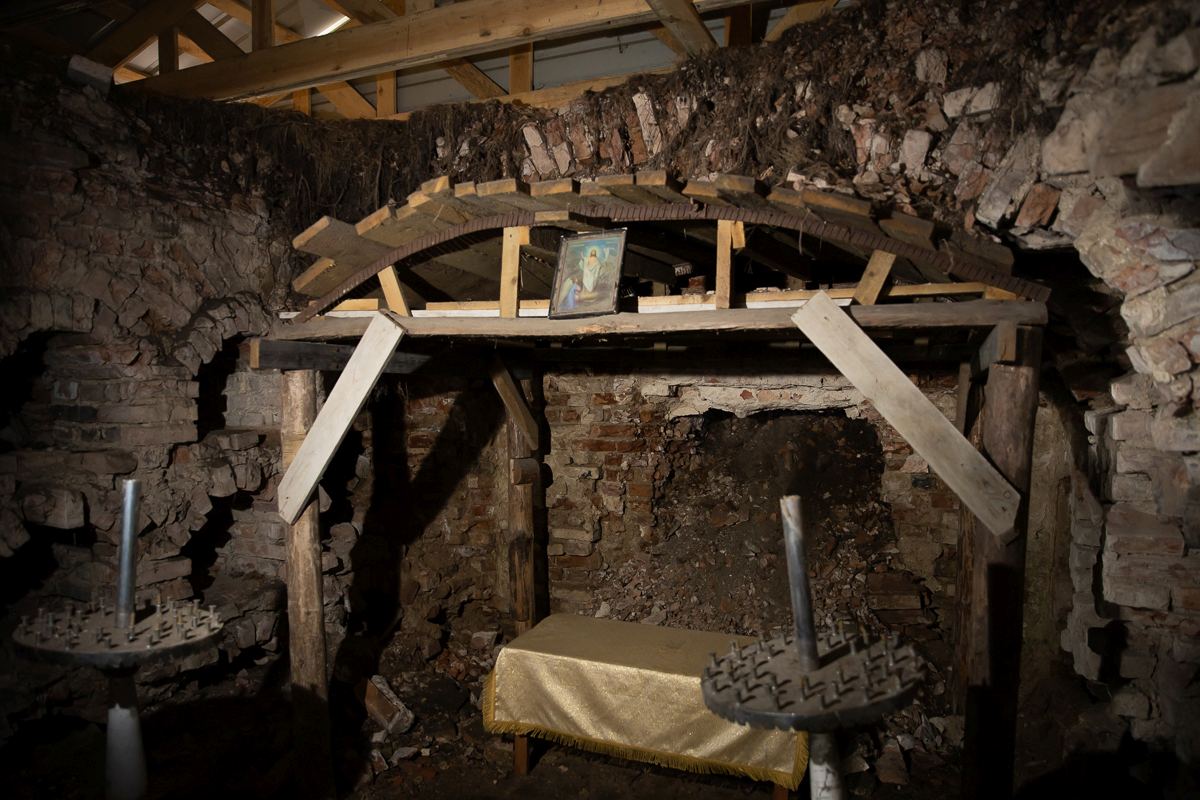Supraśl catacombs – history and future. Multimedia panel in the Supraśl Academy
14-06-2022
As part of the European Archaeology Days 2022, the Monastery of the Annunciation of the Blessed Virgin Mary in Supraśl is organising a multimedia panel “Supraśl catacombs – history and future”. During the event it will be possible to learn about an exceptional archaeological monument and a unique element of the cultural heritage of the Podlaskie Voivodeship, which are the late gothic Supraśl catacombs. The co-organisers of the panel are: the University of Bialystok, Bialystok University of Technology, the Medical University of Bialystok, Christian Academy of Theology in Warsaw and the Supraśl Academy. The panel is held under the honorary patronage of the National Heritage Institute and the Marshal of the Podlaskie Voivodeship.
During the panel it will be possible to learn about the research and works undertaken as part of the cooperation established by the monastery with the above-mentioned universities. These are the first results of the joint project of saving the Supraśl catacombs. Plans for securing the catacombs and making them accessible to visitors will also be presented. The event is addressed mainly to the inhabitants of Podlaskie Voivodeship, in particular to the Supraśl residents.
The session will take place on Sunday, 19 June 2022. It will begin at 11 am with a plenary part in the auditorium of the Supraśl Academy (1 Klasztorna St, Supraśl). The following presentations will be made:
-
Devotion to the dead – ihumen Dr Panteleimon (Karczewski)
-
Archaeological mysteries of the Supraśl catacombs – Assoc. Prof Maciej Karczewski, PhD
-
What can we read from bones? – Iwona Ptaszyńska-Sarosiek, PhD (MD)
-
The catacombs as seen by the constructor – Assoc. Prof. Janusz Krentowski, DSc, PhD, Eng
-
How to preserve and make catacombs accessible? – Prof. Jerzy Uścinowicz, DSc, PhD, Eng, Arch.
After a concert of songs performed by the Orthodox Parish Choir in Supraśl and guests from Ukraine, an open-air part will take place – sightseeing of the catacombs combined with listening to memories of the inhabitants of Supraśl.
The history of the catacombs dates back to the first half of the 16th century, when between 1532 and 1557 the Church of the Resurrection of Christ was built south of the monastery buildings, and beneath it – the catacombs with nearly two hundred burial niches were constructed. They became the burial place for the monks and founders of the monastery, including the elite of the Polish-Lithuanian Commonwealth – representatives of the families: Chodkiewicz, Czartoryski, Sanguszko, Sapieha, Tyszkiewicz, Wiśniowiecki, and others. In the second half of the 19th century, for safety reasons, the church was demolished and the catacombs were covered with an earth mantle. In the second half of the twentieth century the catacombs deteriorated. Efforts to preserve them, made by the conservation services in the mid-1970s and 1980s, failed. From year to year their condition deteriorates.
The result of many years of efforts to save the monument was the signing of a letter of intent on cooperation ‘for the protection of the historic Supraśl Catacombs, a valuable cultural heritage of north-eastern Poland’. The signatories of the letter were: the Monastery in Supraśl, the University of Bialystok, Bialystok University of Technology, the Medical University of Bialystok and the Christian Academy of Theology in Warsaw. The joint project involves interdisciplinary research carried out by specialists in archaeology, history, architecture, construction, mechanics, material science, geomorphology, sedimentology, physical anthropology, medicine, chemistry, biochemistry, palaeobotany and related sciences. The multiplicity of scientific disciplines involved in rescuing the Supraśl catacombs testifies to the richness of content contained in this monument and the complexity of the actions necessary to save it. Public recognition of the significance of the Supraśl catacombs for the cultural heritage of the region and public support for our activities are essential to their success.
